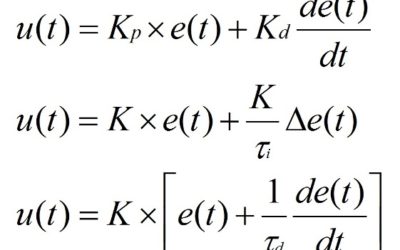From the Trenches: Distillation Columns – Internal Reflux Control
Distillation columns are one of the most often used unit operations for separation and purification in the process industries. They can also be some of the most complex to operate and control, because they involve two-phase, multi-stage, counter-current mass and heat transfer (each tray or segment of packing is a theoretical equilibrium stage). The greater the number of trays, the longer the time constants related to composition changes.
For a two-product distillation column (top and bottom product), there are typically five degrees of control freedom (control valves):
- Reflux flow
- Top product flow
- Reboiler heat input flow
- Bottom product flow
- Pressure control valve (the specific location depends upon how the pressure is controlled).
Three of these valves are needed for inventory control (reflux drum, column bottom, and vapor inventory, or pressure control). That leaves two valves for achieving the primary operating and control objective, namely product composition control. These two valves are normally the reflux flow and the reboiler heat source flow. For many columns, the P&ID’s will specify a top or upper tray temperature controller that adjusts the reflux flow in a straightforward cascade for top product composition control.
Unfortunately, this type of cascade does not always perform very well, and often operators will end up breaking the cascade and using the reflux flow control in AUTO mode rather than CASC. There are several reasons for poor control loop performance – this write-up addresses one of the less recognized and often over-looked sources of process disturbance.
There are at least 7 or 8 different ways to control pressure on a distillation column, and several of these will result in “sub-cooled” reflux. Sub-cooled means that the temperature of the reflux exiting the overhead condenser is below its “bubble point” (the temperature at which the first bubble of vapor boils off the liquid). From a process and control standpoint, what are the implications of returning sub-cooled reflux to the column?
The purpose of reflux is to provide down-flowing liquid throughout the rectification section to contact with the up-flowing vapor in order to achieve stage-by-stage equilibrium heat and mass transfer and, hence, purification of the top product. When sub-cooled reflux is introduced to the top tray, it must be heated up to its bubble point before the lighter components will vaporize. Where does the heat come from? The only place it can come from is from condensing vapor that is approaching the top tray from below. When this vapor condenses, it ADDS to the total liquid flowing from tray 1 down the column. In other words, a sub-cooled reflux introduces a greater volume (or mass or molar) flow of reflux than is delivered to the column by the external reflux flow controller.
If the degree of sub-cooling were constant, then this wouldn’t be such a big source of disturbance; however, this is usually not the case. The amount of sub-cooling will vary with the temperature of the cooling medium (ambient air, cooling water, another process stream, etc.), rainstorms, etc. To achieve satisfactory composition control, the most common approach is to employ an advanced regulatory control (ARC) technique referred to as Internal Reflux Control. The Internal Reflux, that is, the actual flow of liquid from tray 1 to tray 2, can be calculated as follows:
![]()
Where:
R = External Reflux Flow
Cp = Heat Capacity of the Reflux (e.g., BTU/lb-Deg F)
TO = Overhead Vapor Temperature (entering the condenser)
TR = Reflux Temperature
Λ = Heat of Vaporization of the Reflux (e.g., BTU/lb)
An Internal Reflux Controller simply uses this equation to solve for the External Reflux flow required to maintain a constant internal reflux at each control execution. In effect, this controller compensates for changes in the sub-cooled reflux temperature at each control execution.
The final step is to re-build the cascade for composition control, namely, to re-introduce the temperature-to-internal reflux cascade, with the likelihood that this cascade will be more stable, will control composition better, and will enjoy greater operator acceptance.

